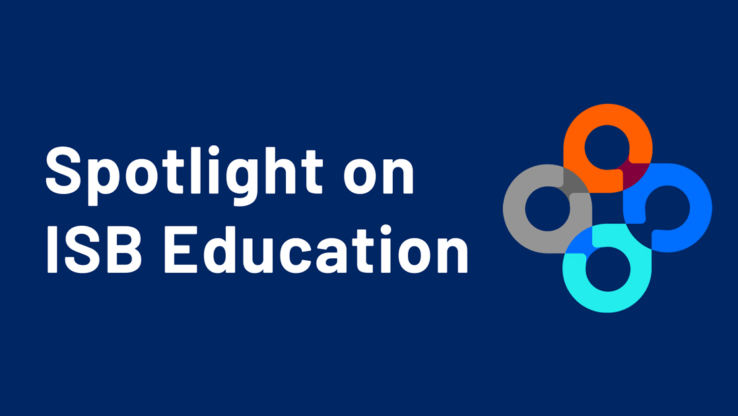ISB Researchers Find a Chink in the Armor of Tuberculosis Pathogen
 isbscience.org/news/2023/10/20/isb-researchers-find-a-chink-in-the-armor-of-tuberculosis-pathogen/
isbscience.org/news/2023/10/20/isb-researchers-find-a-chink-in-the-armor-of-tuberculosis-pathogen/On October 19, 2023, Senior Research Scientist Dr. Eliza Peterson and ISB Director, Senior Vice President and Professor Dr. Nitin Baliga hosted an ISB Research Roundtable. In this video, Peterson gives a presentation about recently published work detailing a pathway within Mycobacterium tuberculosis, the tuberculosis-causing pathogen, that can be edited with CRISPR to alter its ability to divide. Following her presentation, Peterson and Baliga answer a number of questions about the implications of this work, future research avenues to pursue, and more.

Drs. Nitin Baliga and Eliza Peterson
Mycobacterium tuberculosis (Mtb) is the pathogen that causes tuberculosis (TB), the world’s deadliest infectious disease. Mtb is so successful and harmful because it can adapt to different conditions inside our bodies, allowing it to evade treatment.
By using a computer model to understand Mtb’s adaptations, researchers at Institute for Systems Biology (ISB) have identified a network within Mtb that allows it to tolerate and resist drug therapies. When the network is disrupted, researchers found that Mtb’s cells are unable to properly divide, compromising their cell wall – a key defense mechanism.
“We have quite literally found a chink in Mtb’s armor,” said ISB Professor, Director and Senior Vice President Dr. Nitin Baliga, corresponding author of a paper in the journal Cell Reports. “We took a systems approach to figure out how this pathogen circumvents treatment, and we found a targetable mechanism that we know helps it deal with stressful conditions.”
The computer model – called EGRIN 2.0 – helps scientists see how Mtb’s genes work together and are affected by their environment. EGRIN 2.0 identified a signaling system called MtrA that helps the pathogen grow in response to signals from a host’s body. The team also found that MtrA decreases the effectiveness of antibiotics used to treat TB.
“We believe this clears the way for developing a drug to effectively target and inhibit the essential mechanism of the MtrA signaling system, thus preventing Mtb to resist and tolerate treatment,” said ISB Senior Research Scientist Dr. Eliza Peterson, lead author of the paper. “These insights can also help with finding other drugs and/or multi-drug regimens important for treating TB.”
Peterson, Baliga and team also think the EGRIN 2.0 platform has the capability to identify other Mtb vulnerabilities manifesting in different contexts.
“TB can hide itself, making it difficult to kill,” Baliga said. “This powerful technology helps us build models that show us when and how it is doing that, to find new targets, and to understand how drugs work.”
This research was made possible thanks to grants from the National Institute of Allergy and Infectious Diseases and the Bill and Melinda Gates Foundation, and sets the stage for taking networks like MtrA to rapidly find targeted inhibitors.




